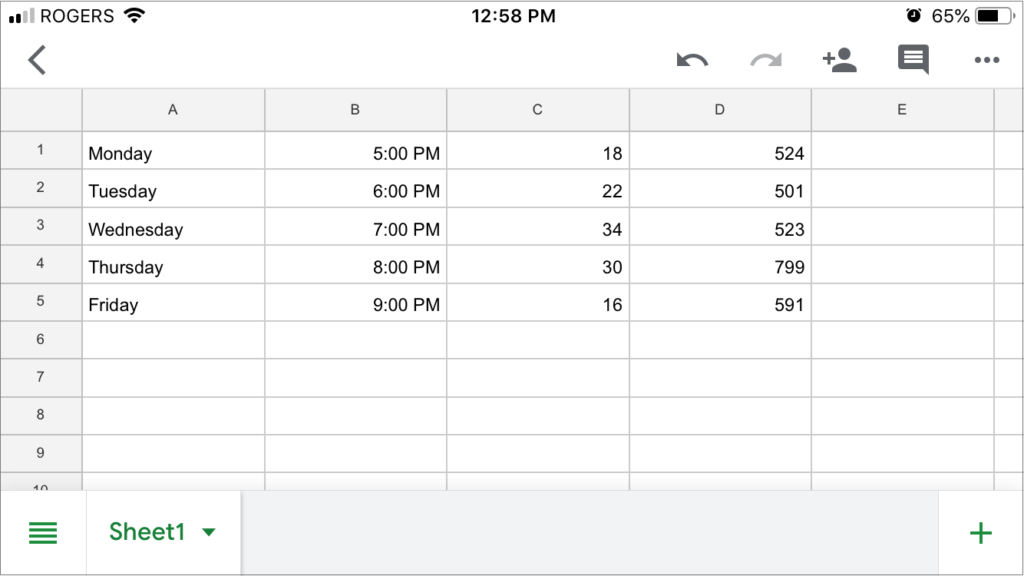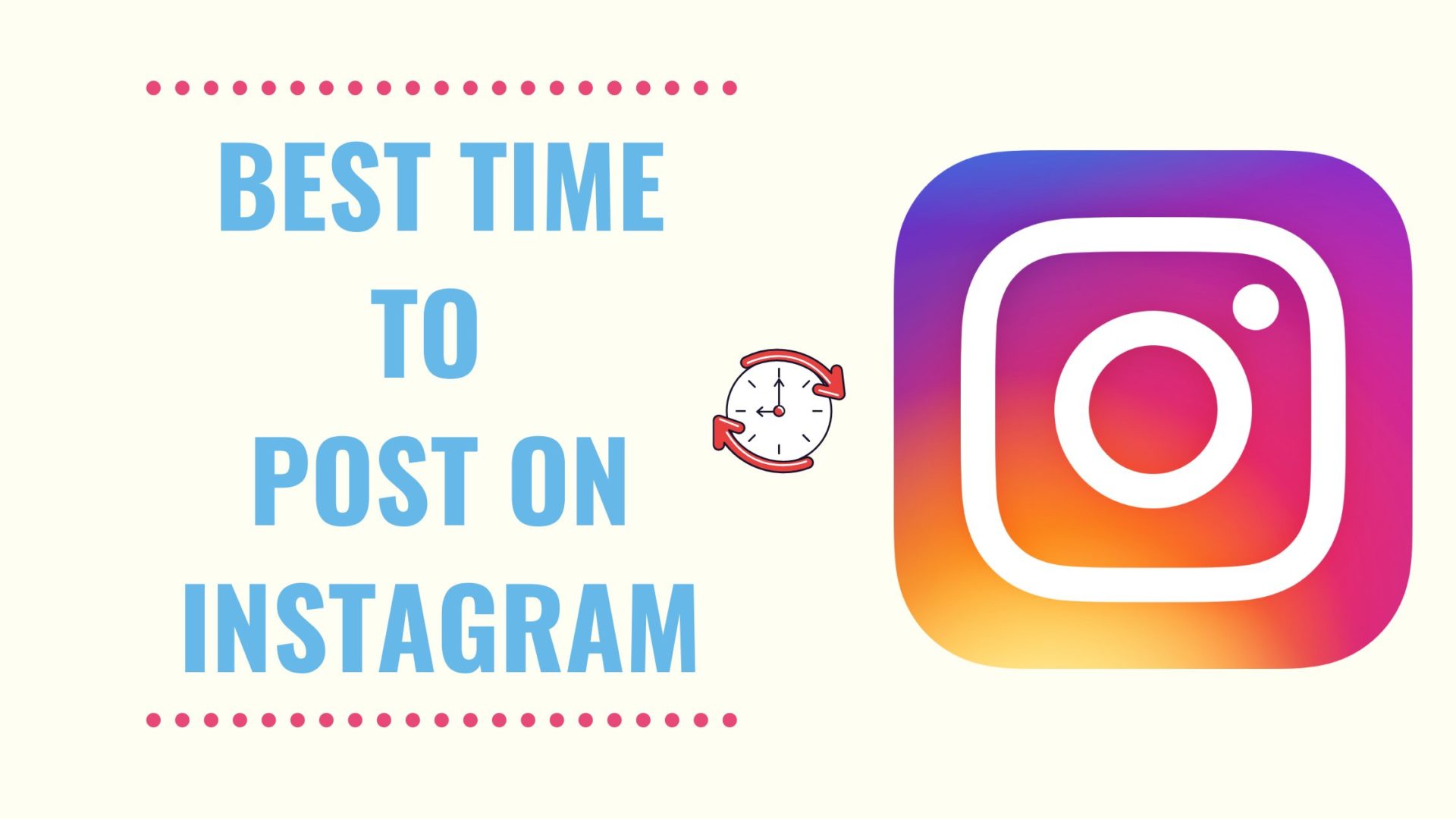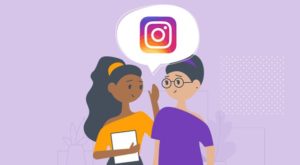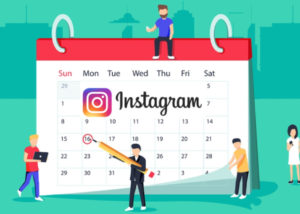When is the best time to post on Instagram and how many times should you post on Instagram?
Throughout 2020 and into 2021, social media became more important than ever as a way for people to maintain instantaneous connections, find new trends and hobbies, and stay up to date on current events.
Brands had to pivot to thrive in an unexpectedly rapid digital transformation, and social marketers had to combat burnout as the volume of social interactions and the demands on messaging increased.
We’ve highlighted the best times to post on Instagram, as well as the overall best and worst days to post. Use this data to help inform scheduling for your publishing calendar, or read on for ideas about how to integrate these findings into your own analysis of your specific account’s peak times for engagement.
Table of Contents
When is the Best Time to Post on Instagram?
The best time to post on Instagram (in local time) is 6 AM, according to Later’s analysis of 35M global Instagram posts.
The best days to post on Instagram are Saturday and Sunday – with the highest average engagement occurring for posts published on Sunday at 6 AM.
On the flip side, posts published on Wednesday between 10 AM – 4 PM and Thursday 9 PM – 11 PM receive the lowest engagement rates on average, making them the worst days to post on Instagram.
The Best Time to Post on Instagram Each Day
The best times to post on Instagram per day, according to 35M global Instagram posts, are:
- Monday: 5AM
- Tuesday: 6AM
- Wednesday: 6AM
- Thursday: 5AM
- Friday: 6AM
- Saturday: 6AM
- Sunday: 6AM
The Worst Time to Post on Instagram Each Day
The worst times to post on Instagram per day, according to 35M global Instagram posts, are:
- Monday: 2PM
- Tuesday: 1PM
- Wednesday: 10AM
- Thursday: 11PM
- Friday: 9AM
- Saturday: 8PM
- Sunday: 4PM
So… What Does This Tell Us?
Historically, we believed that posting when your audience was most active was the most effective strategy — and while this does appear to have a positive correlation, it’s not the only factor that impacts engagement.
We know that Instagram’s algorithm takes timeliness into account, but perhaps not as much as it once did. We also know that Instagram recently confirmed that the number of interactions in the first 30 minutes does not determine a post’s ranking in the Home Feed.
So the pressure of having your posts go live the moment your audience is most active has been lifted. Instead, an “early to rise, early to post” engagement strategy came to light.
By posting earlier in the day, accounts benefit from less competition (globally, most posts are shared between 9 AM-1 PM each day), while also tapping into traffic from users during their first scroll of the day — even if that’s a few hours after the post was shared.
By being one of the first to post each day, you’re giving your content the best chance of being seen by your audience, regardless of when they are personally most active on the app.
Instagram itself (and the way we use and interact with content on the app) has changed significantly over the last 12 months, so it’s a good time to adjust your posting strategy.
The Best Time to Post on Instagram by Location
Another factor that can have an impact on the average best time to post on Instagram is location.
Different regions have different audience behaviors and can be heavily impacted by time zone overlaps.
For example, New York is 3 hours ahead of California — but accounts based in New York will likely still have followers spread across both regions.
Here are the best times to post in local times across different time zones:
- US and Canada (Western): 12AM-6AM
- US and Canada (Central): 6AM-8AM
- US and Canada (Eastern): 4AM-9AM
- South America: 4AM
- UK: 4AM-6AM
- Europe (Western): 6-8PM
- Europe (Eastern): 5AM-7AM
- Africa: 6AM
- Middle East: 3AM
- East Asia and Southeast Asia: 11PM-4AM
- Australasia: 11PM – 2AM
While these local times are a good starting point, if you want to get the most engagement, it’s best to find your personalized best times to post based on your unique audience.
By doing this, you can actually hack the algorithm to increase your reach and get more likes and followers!
How to Find Your Unique Best Time to Post on Instagram
Here are a few tools and features that can help you discover your personal best times to post on Instagram:
- Instagram Insights can be used to find when the majority of your followers are located and when they are most active. This isn’t quite as precise as using Later’s Best Time to Post algorithm, but can be a great starting point.
- Manually track when you post on Instagram and how your posts perform over time using a spreadsheet.
#1: Use Instagram’s Built-in Analytics to Understand Your Audience
You can use Instagram’s native insights to understand where the majority of your audience is located and when they are most active.

These data points can be super valuable indicators for when your best times to post might be.
For example, if the majority of your audience is in New York — you might want to schedule your posts for 6 AM EST.
In order to access Insights, you’ll need to set up an Instagram business profile or an Instagram creator profile.
#2: Use a Spreadsheet to Manually Track Your Best Times to Post
If you’d rather crunch the numbers yourself, you can create a spreadsheet to track how much engagement you receive when you post at different times on different days.
Start by picking five different times throughout the week.
In your spreadsheet, track how many likes and comments each post receives, along with the date and time that you posted them.

The following week, switch the timing of your posts for each day. For example, if you posted at 5 pm on Monday in week 1, post at 6 pm during week 2.
It might take a few weeks, but you can use this information to help you choose the best days to share to specific networks based on your own audience, along with the times that work best for getting traffic on those specific days.
Once you have a clear understanding of your best times and days to post on Instagram, you can schedule your posts at those times.
How to Capitalize on Your Best Time to Post on Instagram
Once you’ve discovered your unique best time to post, you can adjust your content strategy to capitalize on it.
Here are our top tips to keep in mind:
Tip #1: Schedule Your Posts for Prime Times
Scheduling your posts to be aligned with either our global best times to post data, or your personalized best times to post is your best bet for increasing your posts’ engagement and reach.
Plus, Instagram engagement has a compounding effect.
When a post gets a lot of likes, comments, and saves, that engagement will translate into Instagram bumping your post higher up on users’ feeds and potentially getting a spot on the Instagram Explore page, which, in turn, could result in even more engagement on your post.
It’s a cyclical process: higher engagement leads to more visibility, which leads to higher engagement, which leads to more visibility. But it all starts with when you post on Instagram.
Tip #2: Prioritize Your Posts
Once you know your best times to post on Instagram, you can organize your posting strategy with them in mind.
For example, you might notice that you have lower engagement during the weekend.
You’ll still want to show up and share content with your community, but you could save your most important posts for another day.
For the best results, save your biggest messages for the top engagement slots.
Tip #3: Don’t Forget Reels and IGTV Videos
We’ve mainly focused on feed posts in this blog so far, but the same rules apply to Instagram Reels and IGTV videos.
Publish all your content to tap into peak activity zones to give it the best chance of success.
The only slight exception to this rule is Instagram Stories, which are less time-bound due to their 24-hour lifespan. However, it still helps to post them when your audience is active and engaged.
How to Schedule for Your Best Time to Post on Instagram
Now that you know when your Instagram audience is most active, and how to drive the most engagement based on your audience’s activity, the last step is to schedule your Instagram posts for your personalized best times to post on Instagram.
There are many reasons why you should schedule Instagram posts in 2021, but the most important?
Consistency. Scheduling content in advance ensures that you’re posting at the optimal times on Instagram.
With Quick Schedule, you can create your own Instagram queue based on your best times to post.
You just have to select your posting times once, and then you can drag and drop posts onto your calendar, which will then be automatically scheduled. Easy, right?
Instagram is an incredible channel for businesses to achieve their marketing goals, but in 2021, it isn’t enough to just post content whenever you feel like it.
By leveraging your best time to post on Instagram and scheduling in advance, you can boost engagement, gain new followers, and even drive traffic!
How Many Times Should You Post on Instagram Per Week?
Based on our analysis, the more you post on Instagram per week, the greater your overall reach will be. Similarly, posting more typically equals more likes and comments in total.
However, the rate of reach and engagement per individual post varies as more posts are shared — and this changes, even more, depending on how many followers an account has.
- For accounts with under 1K followers: posting 14 times per week delivers the highest reach and engagement rates per post.
- For accounts with 1K+ – 250K followers: posting 14 or 20 times per week delivers the highest reach rate per post, while posting once per week delivers the highest engagement rate per post.
- For accounts with 250K+ followers: posting only once per week delivers the highest reach rate and engagement rates per post.
Reach rate is a valuable indicator for brand exposure, while engagement rate can indicate how well your content is resonating with your community.
In an ideal world, you want your reach and engagement rates to be as high as possible for every post you share, while still posting frequently enough to make an impact.
How Follower Count and Posting-Frequency Impacts Feed Post Performance
For accounts with less than 1K followers, the more feed posts you can share on Instagram per week, the better.
Both reach and engagement rates per post improve as posting frequency increases per week, with the average engagement rate climbing from 3.1% at one post per week, to 4.9% at 20 posts per week.
To put this into perspective, if an account has 500 followers, the number of engagements will grow from 15 (at one post per week) to 500 (at 20 posts per week). That’s quite a significant increase.
This is likely because these micro accounts don’t have a large community of followers as their primary source of engagement — they’re relying on new audiences to comment and like their posts via hashtags — and the reach rate grows with each additional post shared.
For accounts with between 1K+ – 250K followers, the reach rate per post still improves as more feed posts are shared, but engagement rates see a significant decline.
This could be due to audience fatigue, a drop in content quality as volume increases, or the fact that the Instagram algorithm typically only promotes your most recent post to your followers.
For accounts with over 250K followers, both reach and engagement rates per post decline significantly as more feed posts are shared per week.
This decline in reach rate could be due to the fact that these mega accounts are less likely to rely on hashtags as their primary source of reach.
Instead, they rely on their existing community to engage with their content and drive virality — and for this group, posting more per week results in a major drop in engagement rate per post.
It could also be that accounts of this size are more focused on using Instagram Stories to engage with their community. Stories are informal and engaging, making them perfect for daily interactions and relationship-building.
So, How Often Should You Post on Instagram?
The answer? It all depends on your goals.
If your goal is to reach new audiences, posting more frequently on Instagram, paired with an effective hashtag strategy, is always a good idea — especially if you have under 250K followers.
According to our analysis, for the best reach rate per post, you should post:
- 14 times per week if you have under 1K followers
- 14 or 20 times per week if you have 1K-250K followers
- 1 times per week if you have over 250K followers
If your goal is to increase your engagement rate, you should post:
- 14 times per week if you have under 1K followers
- 1 times per week if you have over 1K followers
But try not to get too caught up on the numbers — protecting your mental health and creating quality content that drives real value for your audience should always usurp quantity.
And remember: there is no one-size-fits-all approach for posting frequency on Instagram. Instead, use this data as a starting point to gather insights and experiment with your own account to find what rings true.
*Study based on analysis of 35.7M Instagram feed posts published via Later between 2019-2021. Excludes Reels and IGTV posts.




